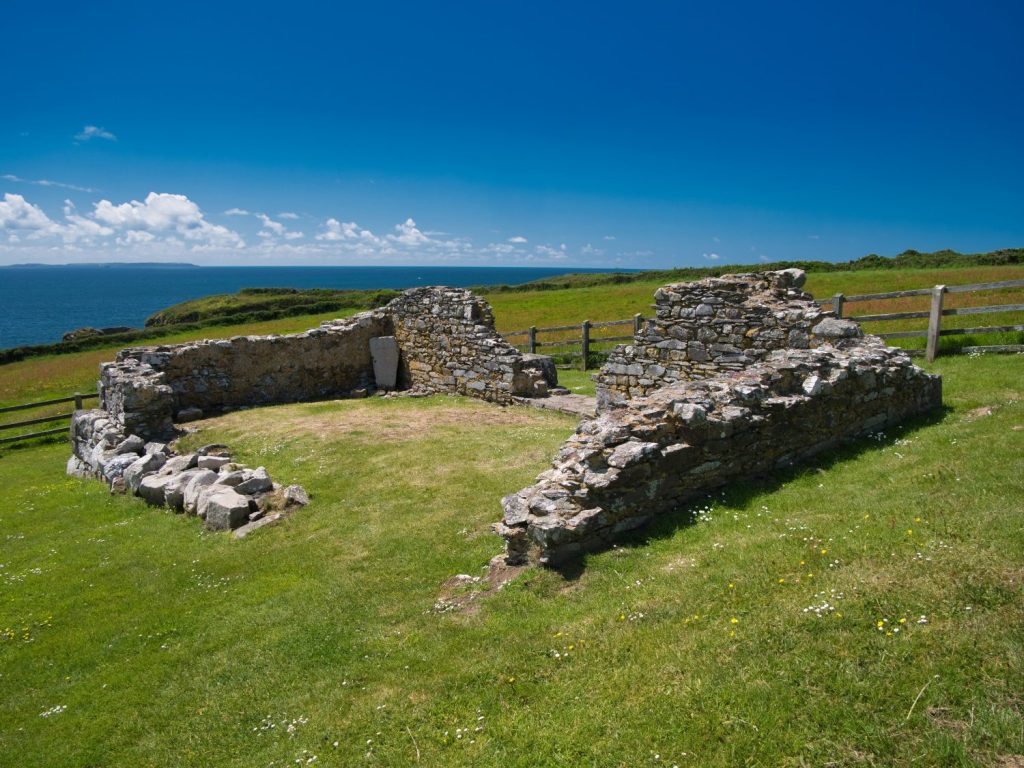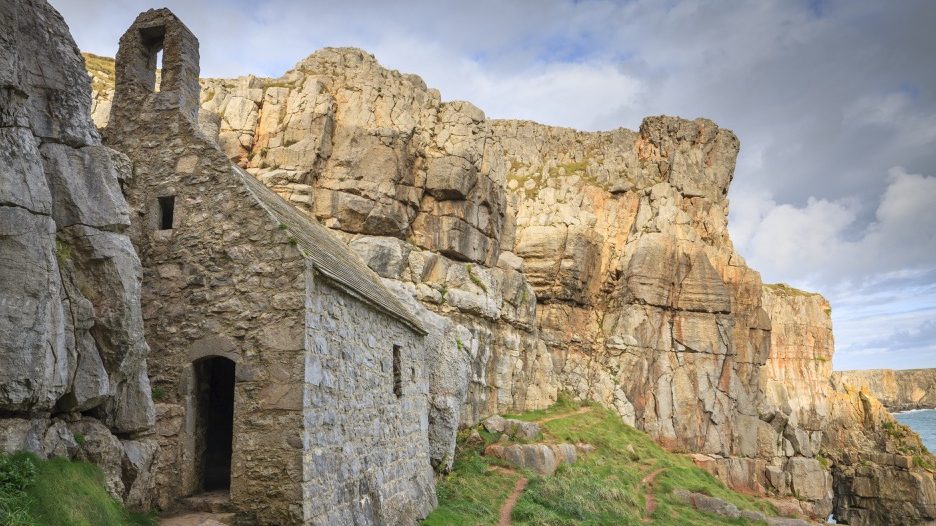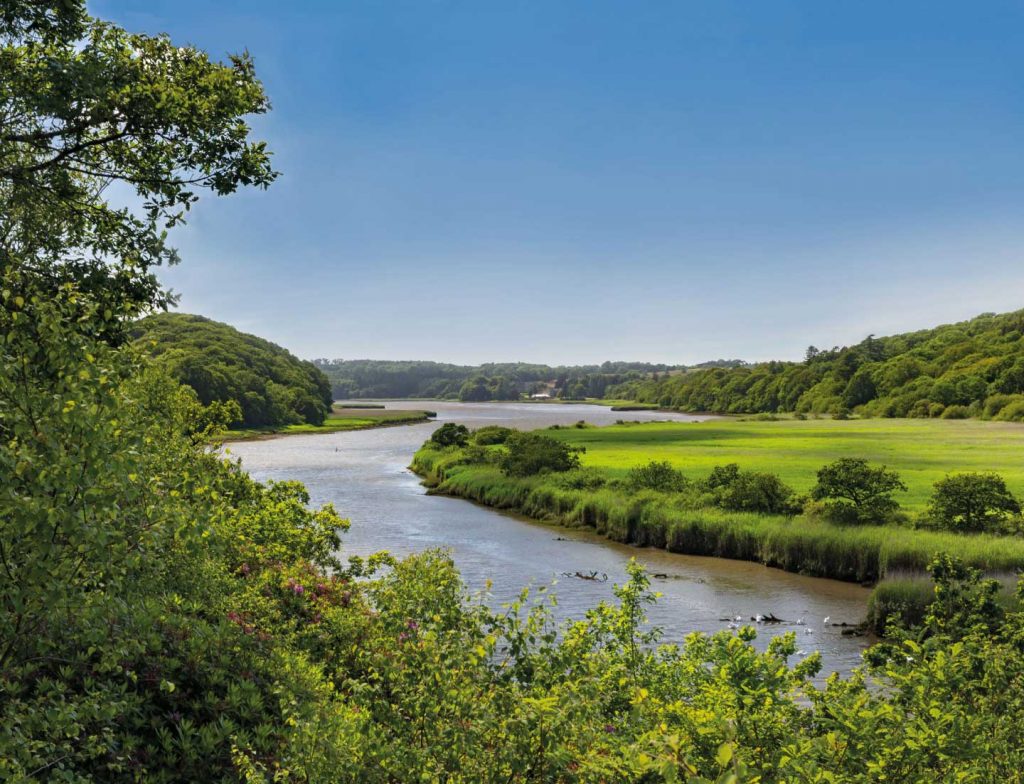Pembrokeshire is blessed with a number of early saints such as St David, St Teilo, St Justinian, St Ishmael, St Brynach and St Caradog and with them come many colourful myths and legends. Here are just a few:
- St Justinian was apparently murdered on Ramsey Island by having his head cut off, which he then picked up and walked across the water to the mainland.
- When St Govan was fleeing from pirates (as was customary in those days!), a cleft of rock opened up to hide him near the chapel that still bears his name.
- Brynach communicated with angels on ‘Mons Angelorum’ or Carn Ingli, Newport, otherwise known as the Mount of Angels. He is also said to have learnt to talk to animals, convincing two stags to pull his cart and a wolf to look after his cow.
- A deluge of rain caused the temporary abandonment of Caradog’s funeral cortège en route to St Davids. It is said that when the rains stopped, it was found that the bier and its silken pall were bone dry. Even when interred at St Davids, Caradog refused to allow William of Malmesbury to take away a finger of his incorrupt body.
Two pilgrimages to St Davids equalled one to Rome
Christianity had been introduced into Wales during the late Roman period but was not widely practised until the 5th and 6th centuries. This became known as the ‘Age of the Saints’ when the country was evangelised by missionary monks from Ireland and the Continent.
The history of this period is fragmented, but the most important early Christian centre was St Davids. David was born around 530 AD at St Non’s during a storm, when a spring – today’s holy well – sprung from the rocks. David’s family were of noble stock and after his education he set up his monastery at St Davids in circa 550 AD.
His monastic rule could be seen as being a little harsh: ‘He that does not work, neither shall he eat’ and monastic penance involved monks immersed in cold water up to their necks. David’s monastery had a strong following by the time of his death in 589, but when Pope Callistus II canonised David circa 1120 (decreeing that two pilgrimages to St Davids equalled one to Rome), the shrine of St David remained an important centre of pilgrimage throughout the medieval period.
In South Pembrokeshire, the areas of Caldey and Penally were important centres of early Christianity and almost contemporary with St Davids. Abbot Pyro set up a monastery at Caldey but was then succeeded as abbot by St Samson circa 550-2, while Penally was the site of a Celtic monastery and the birthplace of St Teilo in the 6th century.
Many church dedications across the National Park are of early saints associated with David’s monastery. Elvis, Govan, Brynach and Madog were all sixth century saints of Irish descent, while Justinian and Ishmael were of Breton noble birth, converted to Christianity. Issell, along with his father Teilo, seemed to be native converts. The last of the Celtic saints was Caradog (c.1124), whose bones are said to rest in St Davids Cathedral.


